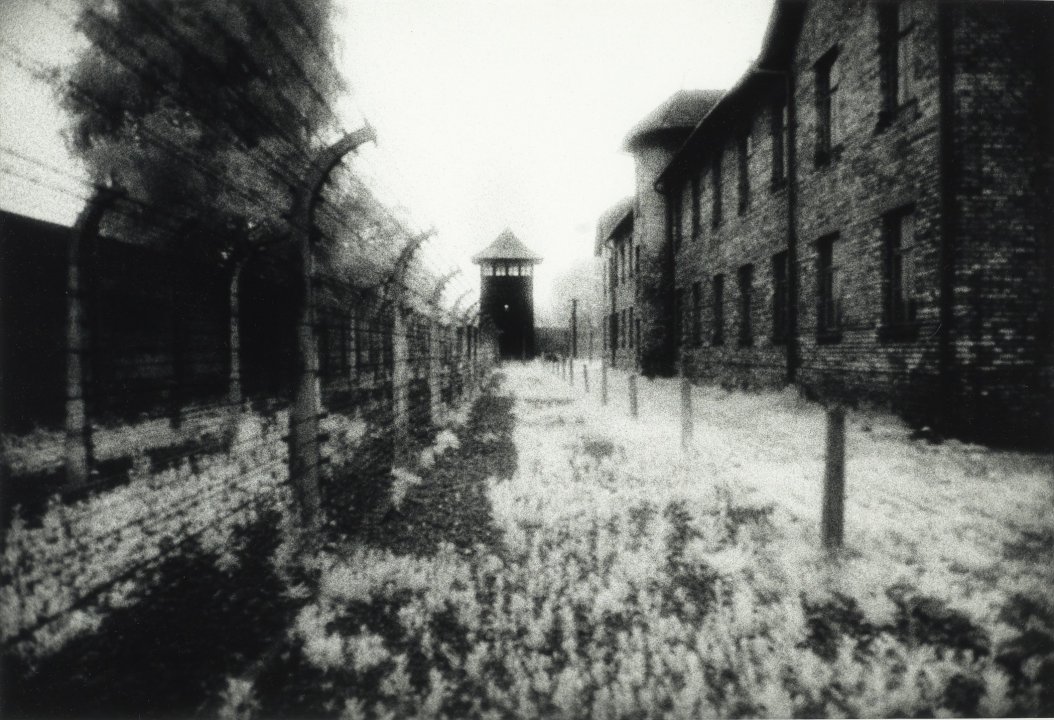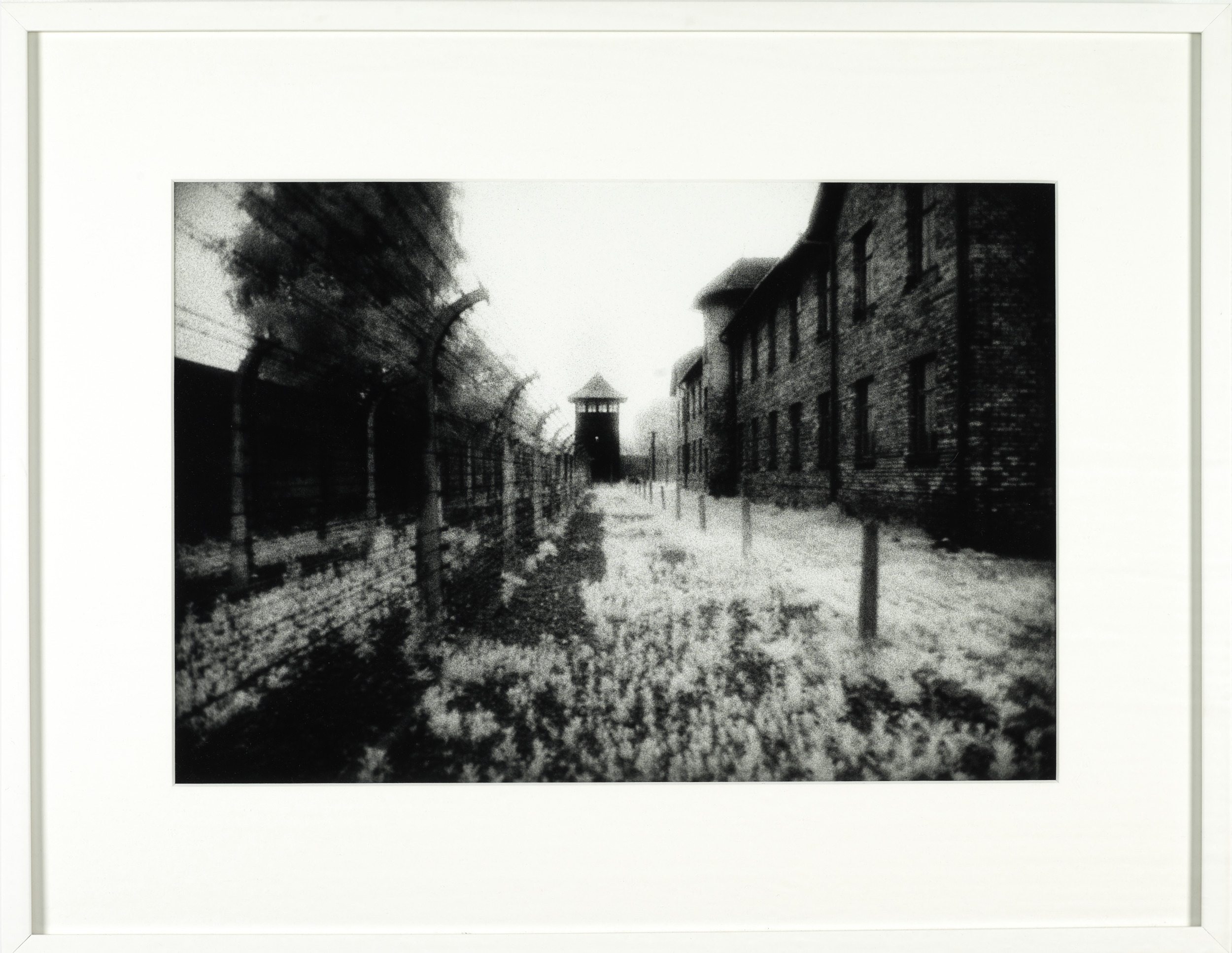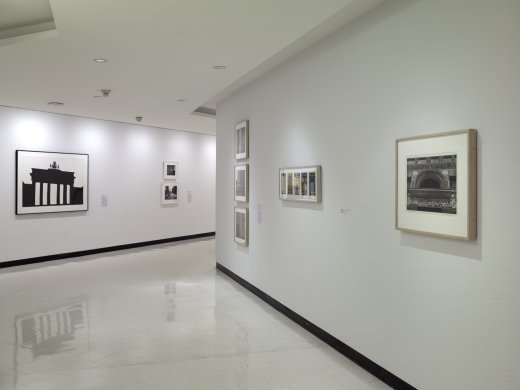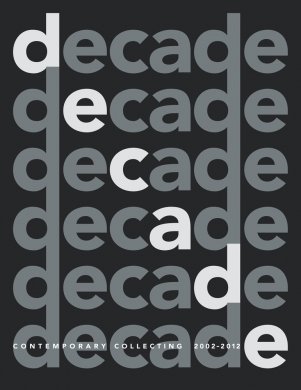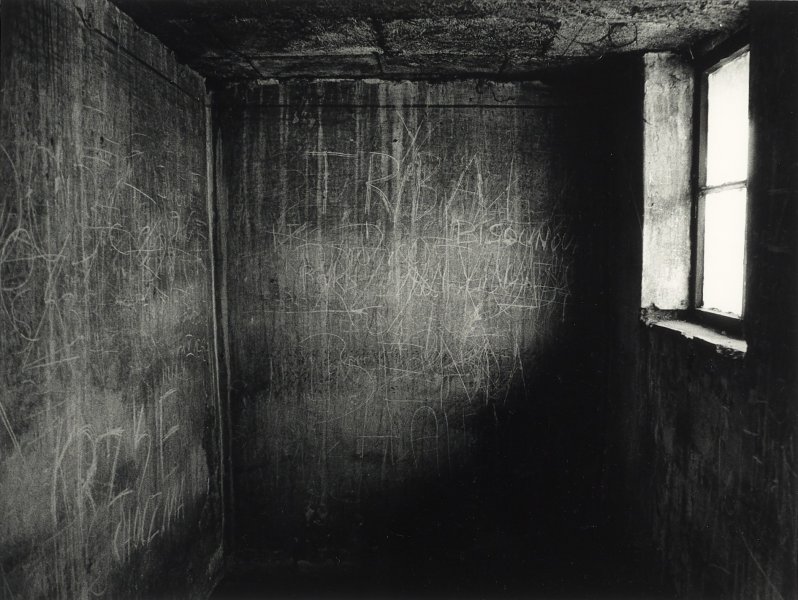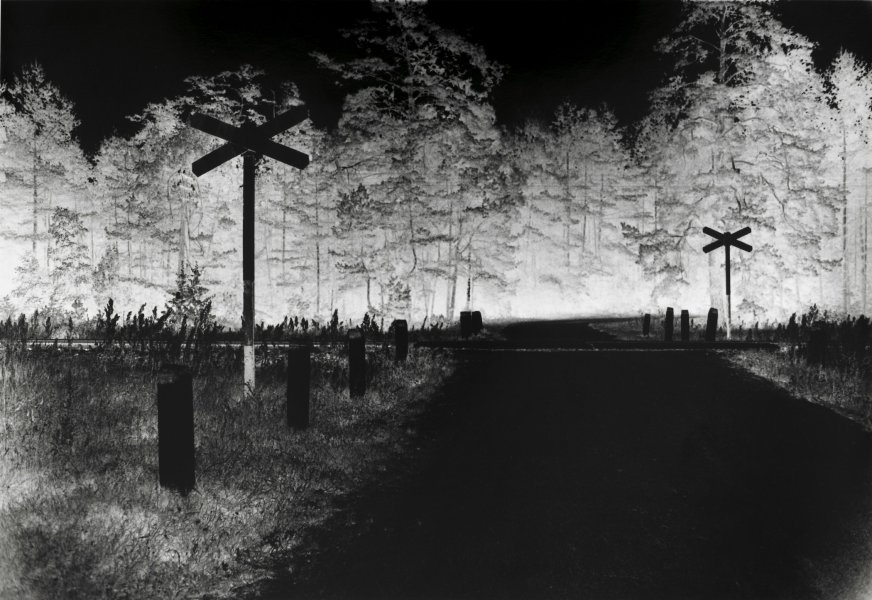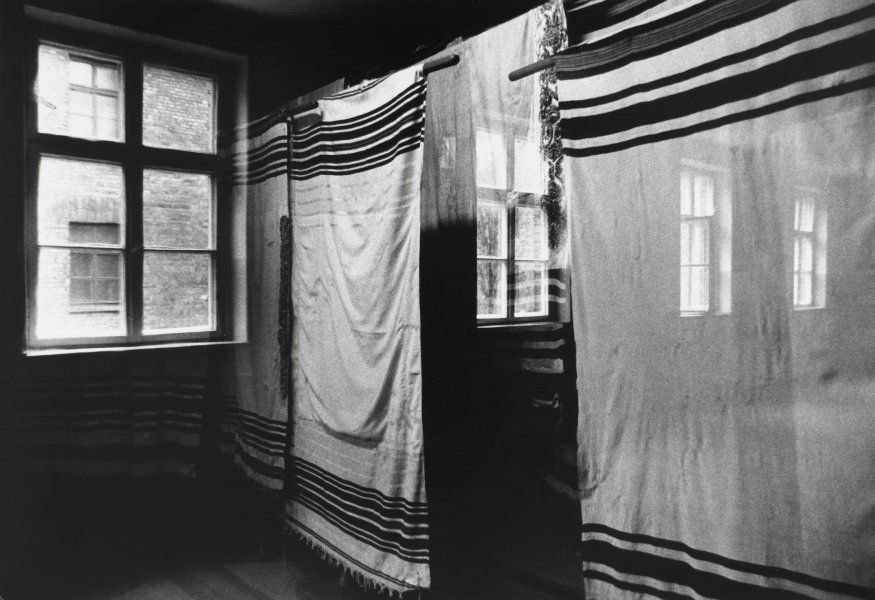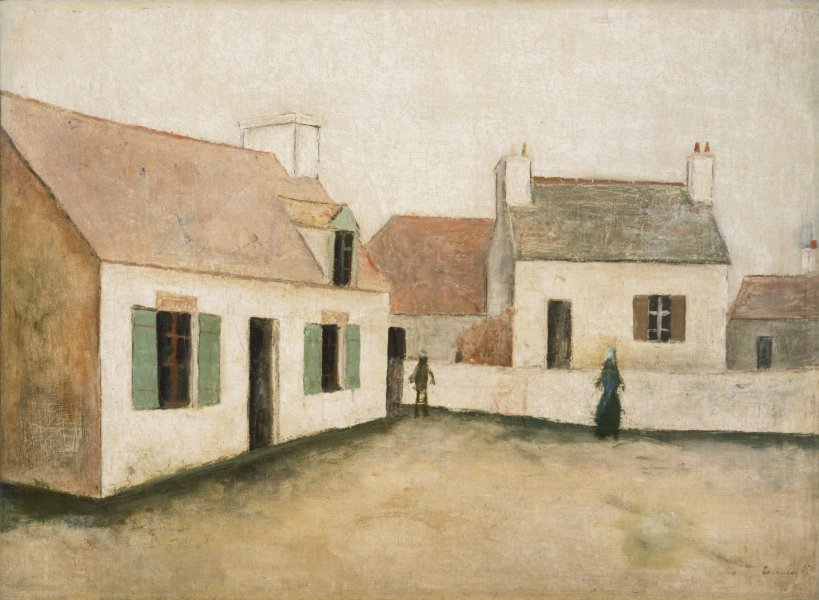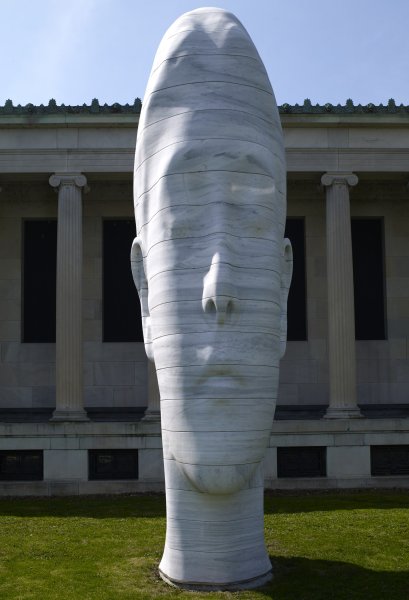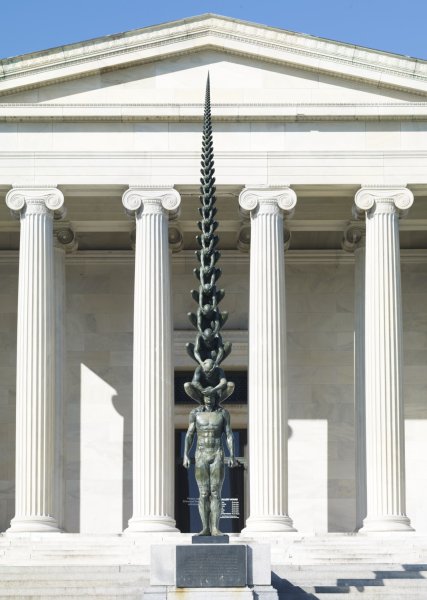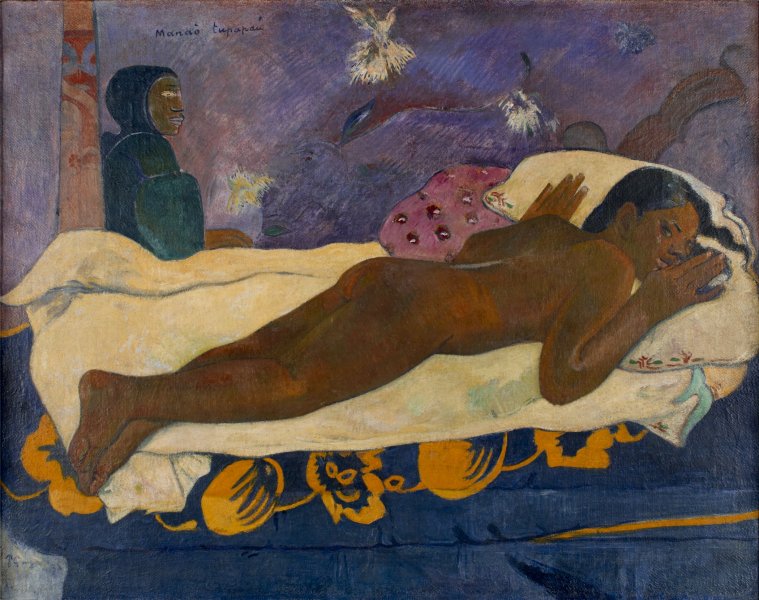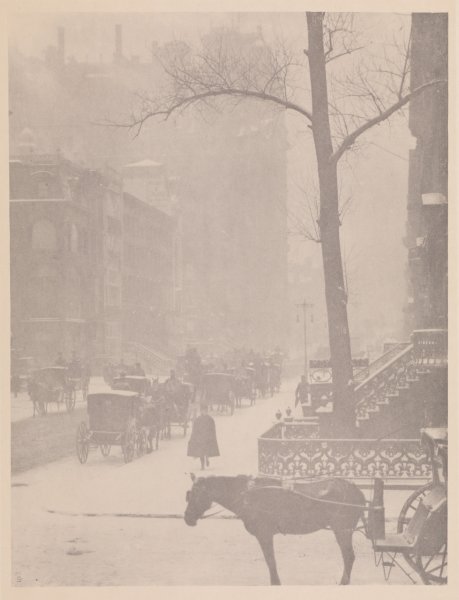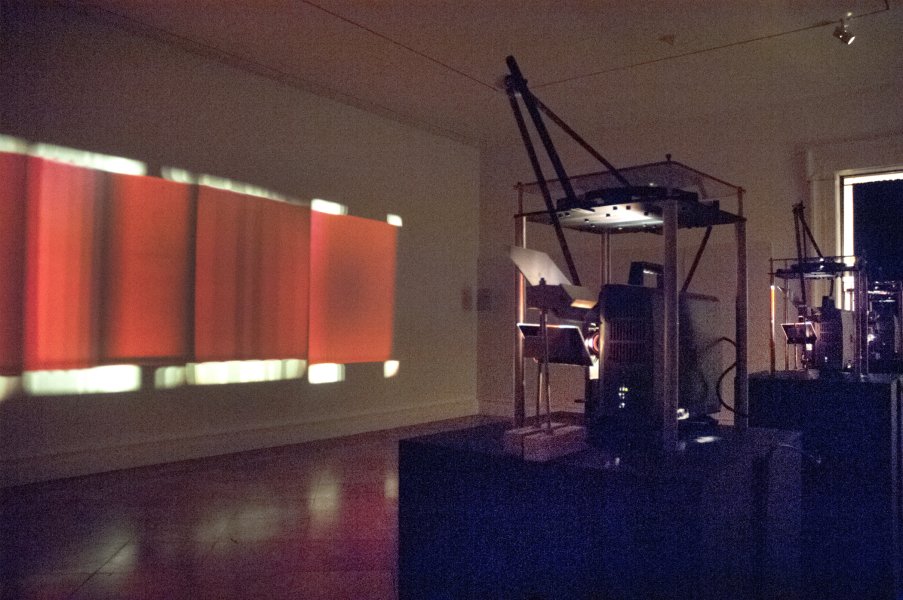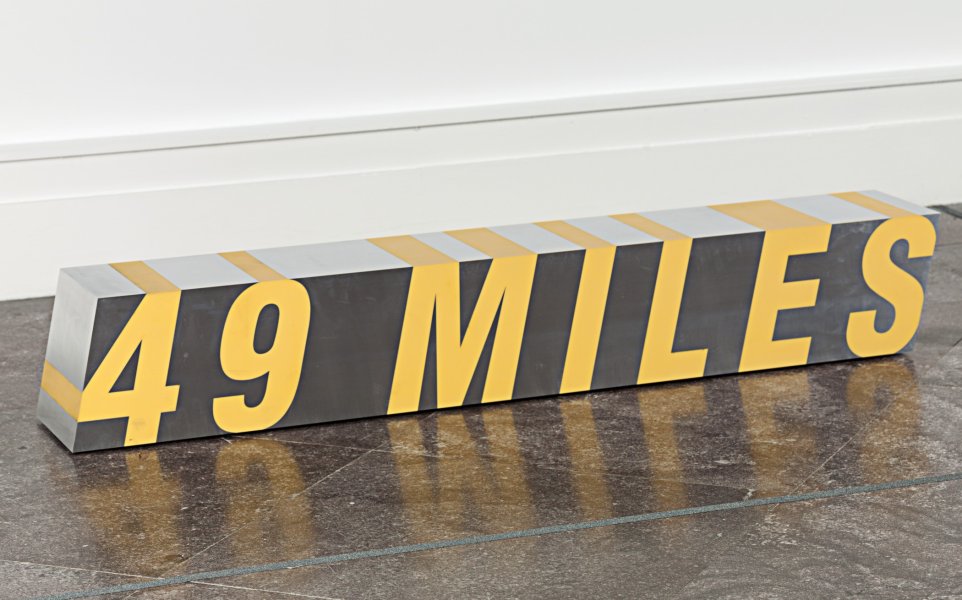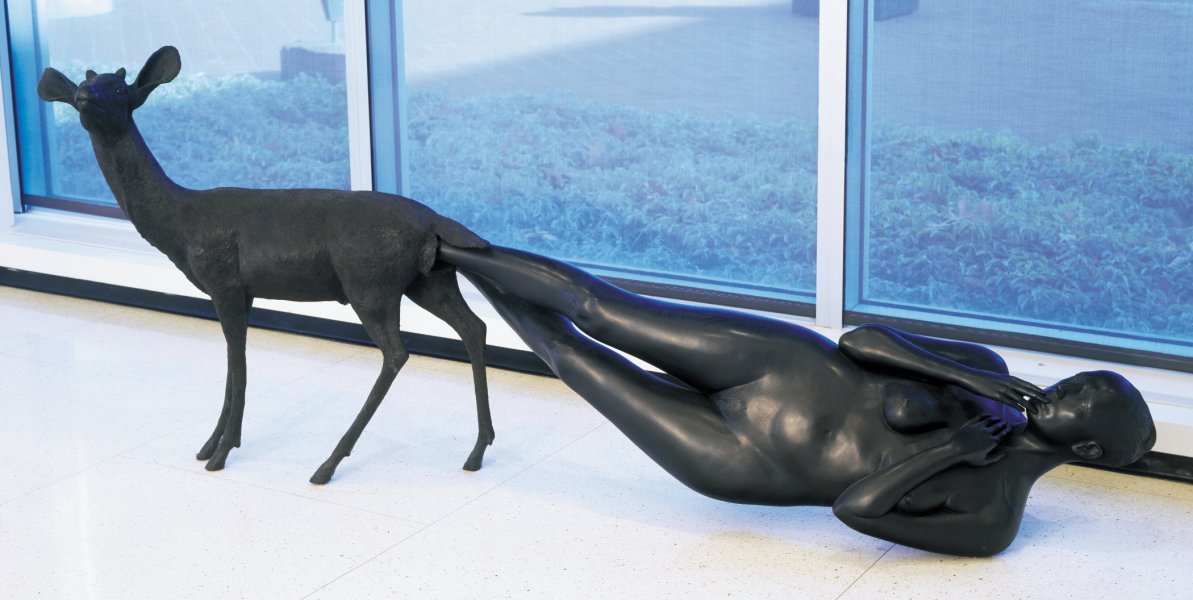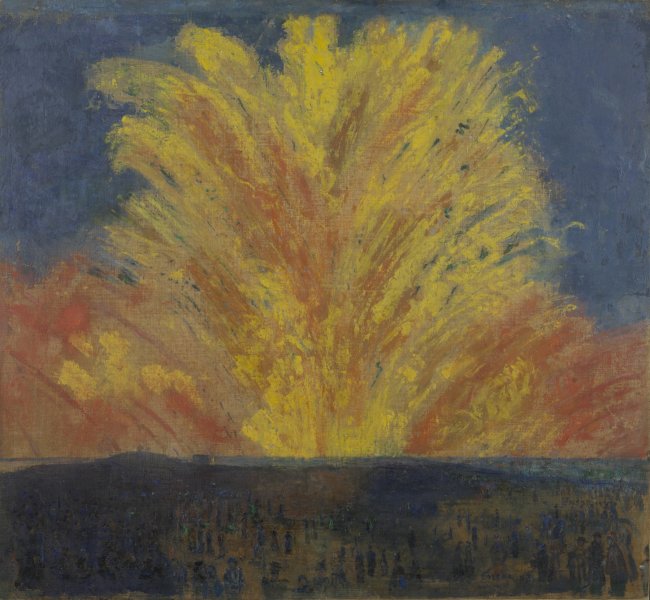Judy Glickman Lauder
American, born 1938
Exterior, Auschwitz Concentration Camp, Poland, 1990
Artwork Details
Materials
gelatin silver infrared print
Measurements
image area: 13 1/4 x 19 3/8 inches (33.65 x 49.21 cm); sheet: 16 x 19 13/16 inches (40.64 x 50.32 cm)
Collection Buffalo AKG Art Museum
Credit
Gift of the artist, 2001
Accession ID
P2001:15.2
In 1949, the German philosopher Theodor Adorno declared that the idea of making art after the horrors of the Holocaust was itself “barbaric.” Ironically, it was precisely through the art of photography that the barbarity of the Holocaust was made known: as Allied forces liberated Hitler’s concentration camps, such as the one in Auschwitz, they produced photographic evidence of the horrors found there—images that then circled the globe. While our collective memory of the Holocaust risks becoming more distant with the passage of time, documentary photographs, like the architectural ruins of the camps themselves, bear witness to what happened. Judy Glickman Lauder’s more recent photographs of Auschwitz use artistic techniques to insist that we continue to look. With their blurry focus and stark contrasts of light and dark, they convey a sense of drama equal to the emotional charge of their content. Further, by placing us next to a barbed-wire fence—which traps or blocks our vision—Lauder heightens this drama and prompts us to identify with the prisoners. In Lauder’s images of one of the most evil structures ever built by man, architecture is far from a neutral backdrop to history: it can be an agent of terror, but also of memory and empathy.
Label from Window to Wall: Art from Architecture, November 18, 2017–March 18, 2018
